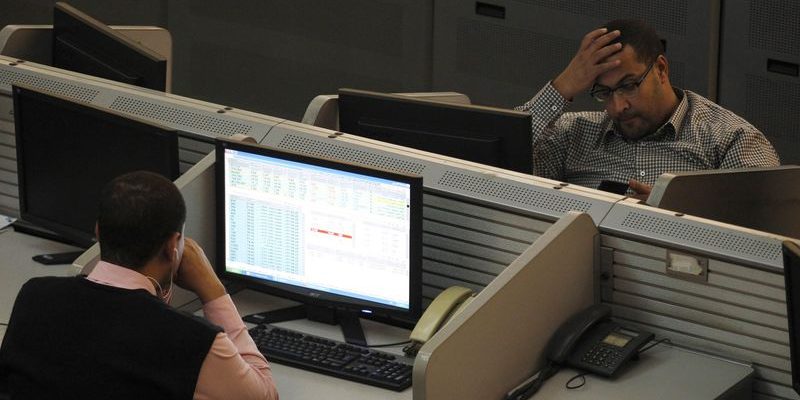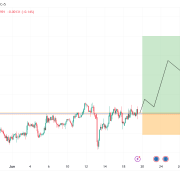
During the recent Bank OZK (NASDAQ:OZK) Third Quarter 2024 Earnings Conference Call, the management team, including CEO George Gleason and CFO Tim Hicks, provided an optimistic outlook for the bank’s future, particularly focusing on net interest margin (NIM) improvement by late 2025. The call highlighted the bank’s strategic shifts, asset quality, and anticipated growth in the Corporate and Institutional Banking (CIB) sector, as well as expectations for a decrease in deposit costs and an increase in loan growth.
Key Takeaways
Management anticipates improvement in net interest margin (NIM) by late 2025, influenced by Federal Reserve interest rate movements and deposit repricing.
The CIB sector is expected to experience mid- to high single-digit loan growth in 2025.
The bank has expanded the CIB team significantly, integrating existing businesses and aiming for a self-funded ratio of around 30%.
Asset quality improvements were noted, with a focus on maintaining a strong credit culture and a charge-off ratio below the industry average.
The Real Estate Specialties Group (RESG) is projected to decrease to below 50% of total loans as CIB grows.
The bank is working on a Chicago land loan recapitalization and reported progress with sponsors on classified loans.
A new mortgage business is expected to contribute positively to net income next year.
The bank maintains a disciplined approach to M&A activity, remaining open to strategic opportunities.
Company Outlook
Bank OZK aims for NIM improvement by late 2025, driven by Federal Reserve interest rate movements and deposit repricing.
Plans for branch expansion by the end of 2025, focusing on several key states with no specific deposit targets but expectations of significant deposits per branch.
The mortgage business is expected to become profitable next year, contributing to net income.
Bearish Highlights
The potential impact of Federal Reserve rate changes on margins exists; quicker hikes could pose challenges.
The Chicago land loan is working towards recapitalization, with slow progress reported.
Bullish Highlights
Anticipated mid- to high single-digit loan growth in CIB for 2025.
Positive outlook on asset quality, with active engagement from sponsors on classified loans.
The launch of a mortgage business and capital markets and trust services expected to grow fee income.
Misses
No updates on merger and acquisition activity were provided during the call.
Q&A Highlights
Analysts inquired about loan classifications, the impact of paydowns on NIM, and deposit opportunities within CIB.
Management refrained from detailing special mention loans due to privacy concerns.
Bank OZK’s strategic planning and proactive approach to managing its portfolio and operations position the bank for potential growth and stability in the coming years. With careful attention to asset quality and credit standards, as well as the expansion of services and sectors, Bank OZK looks to navigate the evolving financial landscape successfully.
InvestingPro Insights
Bank OZK’s strategic outlook aligns well with several key financial metrics and insights from InvestingPro. The bank’s focus on improving net interest margin (NIM) and expanding its Corporate and Institutional Banking (CIB) sector is reflected in its solid financial performance.
According to InvestingPro data, Bank OZK boasts a P/E ratio of 7.35, indicating that it’s trading at a relatively low earnings multiple. This could suggest that the stock is undervalued, especially considering the bank’s positive outlook and growth strategies. Additionally, the bank’s revenue growth of 9.32% over the last twelve months and a quarterly growth of 10.1% in Q3 2024 underscore its ability to expand its business, aligning with management’s projections for loan growth in the CIB sector.
An InvestingPro Tip highlights that Bank OZK has raised its dividend for 28 consecutive years, demonstrating a strong commitment to shareholder returns. This is further supported by the current dividend yield of 3.67% and a dividend growth rate of 13.89% over the last twelve months. These figures align with the bank’s positive outlook and could be attractive to income-focused investors.
Another relevant InvestingPro Tip notes that analysts predict the company will be profitable this year, which is consistent with the management’s optimistic projections for various business segments, including the new mortgage business expected to contribute positively to net income.
For readers interested in a more comprehensive analysis, InvestingPro offers additional tips and insights that could provide a deeper understanding of Bank OZK’s financial position and future prospects.
Full transcript – Bank Ozk (OZK) Q3 2024:
Operator: Good day, and thank you for standing by. Welcome to the Bank OZK Third Quarter 2024 Earnings Conference Call. At this time all participants are in listen-only mode. After the speakers’ presentation there will be a question-and-answer session. [Operator Instructions] Please be advised that today’s conference is being recorded. I’d like to hand the conference over to your first speaker today, Jay Staley, M.D. Investor Relations and Corporate Development. Please go ahead.
Jay Staley: Good morning. I’m Jay Staley, Managing Director of Investor Relations and Corporate Development for Bank OZK. Thank you for joining our call this morning and participating in our question-and-answer session. In today’s Q&A session, we may make forward-looking statements about our expectations, estimates, and outlook for the future. Please refer to our earnings release, management comments, and other public filings for more information on the various factors and risks that may cause actual results or outcomes to vary from those projected in or implied by such forward-looking statements. Joining me on the call to take your questions are George Gleason, Chairman and CEO; Brannon Hamblen, President; Tim Hicks, Chief Financial Officer; Cindy Wolfe, Chief Operating Officer, and Jake Munn, President, Corporate and Institutional Banking. We will now open up the lines for your questions. Let me ask our operator Marvin to remind our listeners how to queue in for questions.
Operator: Thank you. It is time to connect the question-and-answer session. [Operator Instructions] Our first question comes from the line of Stephen Scouten of Piper Sandler. Your line is now open.
Stephen Scouten: Hi, good morning, everyone. I Appreciate all the guidance in the management comments, especially the potential for NIM and selection in late 2025 I think was interesting. I’m hoping you might be able to give some color on kind of the puts and takes. Obviously a lot going on there. Maybe talk up a little bit about the CD yields on repricing and beta expectations on the way down, kind of the impact of the floors and that lag effect you talk about on [10-1] (ph), and then sort of the potential drag on the NIM from the handoff of RESG to CIB and the other verticals. And just, you know — that coupled with any debt maturities, just that holistic picture of the puts and takes around the NIM and what gives you confidence around that potential for inflection in the back half of 2025.
George Gleason: Tim, since Stephen’s question touches everything on the balance sheet and income statement, would you like to take that?
Tim Hicks: Sure. Thanks, Stephen. How you doing?
Stephen Scouten: Great. Thank you.
Tim Hicks: Great. Yeah, I mean, a lot of different variables happening. Obviously, the pace of Fed moves is a big component on the timing and the magnitude of the changes in our NIM. The floors, we gave you a good schedule on our floors, when those are expected to be impacting our loan yields and those are on Figure 27. And then really the pace of the cost of interest-bearing deposits and how quickly we can reprice those. You can see that on Page 24, Figure 26, a big component of that is going to be our time deposit and the maturity schedule there. You can see $5.9 billion of time deposits repricing this quarter. The weighted average rate there is $5.19 billion. And you can see $6.2 billion in Q1, weighted average rate of $5.10 billion. So that’s a big component. Currently, our current special is well below that 7-month CD $4.60 billion, 13 month CD at $4.25 billion. So as those come over and reprice, we’ve got a good opportunity to move down deposit costs pretty quickly over the next two quarters. And then you mentioned our securities portfolio having a pretty good impact of cash flow coming in Q1 and early in Q4 and a little bit in Q1, with a good amount of cash flow that’s going to be repriced at higher yields, too. So a lot of different moving parts. The Fed moving, how quickly they move, really is dependent — will depend on really the pace of our — the impact of our NIM on the way down and the inflection point and hopefully, good result in the back half of next year. I mean our Fed assumptions assume a 25 basis point decline for the next six meetings. So if the Fed moves slower than that, then that’s a good situation for us. The Fed moves quicker pace than that’s more headwinds for us, if they move even after into the back half of 2025, we’ll have more of our floors at one of our loans at their floors. We’ll have more opportunities to reprice our CDs even more of that point. So that’s not a bad situation for us either. So we feel like our guidance we’ve given is pretty good in a lot of different scenarios.
Stephen Scouten: Perfect — answer to a comprehensive question.
George Gleason: Yes. Let me add a little color to that and Tim make sure you agree with this that I’m thinking right. The assumption of — our base case assumption is that our margin will be under pressure in Q4 and Q1 because of the 25 basis point decreases in each meeting and the fact that deposits will reprice but loans were repriced faster. We saw the benefit of that on the way up. We’ll catch the headwind of that on the way down. If the Fed were to move 50s in 50 chunks, that would be more impactful in a negative sort of way on Q4, but we would reach the floors much more quickly, so we would hit the inflection point and NIM would start improving more quickly next year. So that’s a point that needs to be understood because those floors are going to begin to kick-in pretty quick here with another couple of Fed moves or with — and Tim referenced you to that chart. But that will lead us to an inflection point when we start catching a lot of those floors.
Stephen Scouten: Perfect. Perfect. Great. And it seems as though you guys feel a little bit more confident around the handoff strategy and the ability to grow loans nicely. I think you said mid- to high single digits in 2025, which is great. And I like that you have Jake here on the call. So can you talk a little bit about that hand off the confidence and maybe the incremental investments, if you can frame those up within CIB from a headcount perspective that gives you that level of confidence?
George Gleason: Yes. Why don’t we start out and let Brannon Hamblen talk about the overall expectations for loan growth, and then he can introduce Jake and Jake can comment on some CIB specifics.
Brannon Hamblen: Yes, absolutely. Good morning guys. Great to be on with you. Yes. A lot of moving parts, as we look forward in respect to loan growth. Obviously, I mean RESG has had coming off 2022, $13.8 billion in originations, has had a lot of funding that sustained a great growth trajectory. But as we move forward, we all know that those construction loans complete and that level of originations will start to turn back around in terms of repayments and you still got some deferred payments from sort of the COVID [error] (ph) loans as well. So we’ve had great progress from RESG, but that will start turning its way around. It’s chunky, it’s not easy to be spot on with when some of these moves occur, but we’ve got a great asset management team. I know we’ve said it many times, those guys have on average, about 15 loans a piece. They spend a lot of time focused on the projects and a really important part of that is forecasting those funding and repayment forecast, 36-month forecast that we do every single month. So we do a really good job of focusing on accuracy there. But based on what we see — we know that the RESG will be coming back the other way, and we are extremely excited to have to Jake and his team on board. I’ll obviously let Jake talk about what they’ve done there, but I’ve spent a lot of my time this year sort of assisting Jake, get that team up and running. And it’s — when we came into the year, we probably had — I don’t know, 10 or 15 folks in that group. And he’s been working hard and fast to expand that by a factor of 3. I think he is close to mid-40s now in terms of employees. So the timing, we think we have really nailed pretty perfectly. And he’s — I’ll turn it over to him to talk about what he’s seeing there and what opportunity he has to take the baton as we’ve said, from RESG.
Jake Munn: Thanks, Brannon. I appreciate it. And a great question. The CIB was formed in March of this year. And really, most of it came to fruition just last quarter with the launch of our corporate banking and sponsor finance group, as well as our loan syndications and corporate services group. And so — what you’re seeing in the third quarter numbers is really just in a sense of teaser for what’s to come. We feel confident, we have great pipelines, as it relates to our legacy asset-based lending group. We provide additional staffing there on the origination side to really help propel growth there. In addition to that, our equipment finance and capital solutions team is really on a role. We provided additional portfolio management and operational support over the last quarter there too, to free them up from some of the administrative oversight, so they could really focus again on building up a nice pipeline of opportunities for the future. And then finally, our fund finance group underneath the CIB as well as, is really off to a great start. We have a new leader in from a nice institution, who’s coming and rolled up her sleeves and is really adding to the overall growth profile there. So we are excited about what’s become optimistic and feel good about it.
Stephen Scouten: Fantastic. And if I could squeeze in one quick one on kind of an accounting question. Can you give any color on what causes the transfer of like a construction loan into maybe a more permanent CRE classification? Is that like when you reach a [CO] (ph) or kind of what drives that classification change? And does that change how you guys have to evaluate the loan from a rating perspective internally?
George Gleason: Brannon ? Could you take that?
Brannon Hamblen: Yes. Stephen, I’ll take that. It’s really a very simple two criteria that make that move. A; the property is complete and has a certificate of occupancy and B; the loan structure includes within it a monthly amortizing feature. With respect to your — the second part of that question, does it change how we look at it or rate it? We are constantly reevaluating our risk ratings on a quarterly basis. So nothing really changes there. We are taking into account before it is complete, what’s going to happen after it’s complete, what leasing has occurred, what we expect to occur valuations, all those sorts of things. So not really a big change there.
Stephen Scouten: Got it. Thanks for the color and congrats on more record earnings.
George Gleason: Yes. Steve, I want to give a little additional color on this handoff in addition to what Brannon and Jake said. A couple of things. While our corporate and institutional banking group under Jake’s leadership is new and he has tripled plus the size of the team there over the course of this year and really brought in better and high-quality, very experienced, very talented people. He is also building on something that is three, four and five years old in our company. Our fund finance business, our asset-based lending business and our equipment finance and structural solutions businesses have been here three, four, five years each. And all those team members are staying and those are businesses we built and improved up and now Jake and his team are taking those, integrating them, expanding them, adding more talent. But all of our existing team members that were here at the beginning of the year are still here because they’re great teams, they’re doing a great job. So we are adding strength on top of strength there. And the second thing that we need to cover in regard to this handoff is that it’s not just corporate and institutional banking. Alan Jessup, Ken Ronecker, Dennis Poer, the guys who are doing our commercial bank lending through our community bank structure that includes all sorts of different types of lending and Dennis Poer over the indirect lending and the consumer lending business, those guys are likewise really stepping up their game. And again, we’ve been building the infrastructure for that step-up in for this handout for a couple of years. So it is a broad-based deal with broad-based contribution from CIB indirect lending, commercial banking and an increased emphasis on small business banking, consumer lending through our branch network as well. So we are feeling really good about it. And as Brannon accurately said, we think we’ve got the timing of this just right — that just is we’re at the point where RESG funded balances are probably going to be more or less flat through year-end next year and that will vary quite a bit from quarter-to-quarter, more or less flat, we are still projecting mid- to high single-digit growth because of the contribution from all these other business units that are getting a new emphasis, but certainly not new to our company.
Stephen Scouten: Thanks for all the incremental color George, appreciate it.
George Gleason: Thank you.
Operator: Thank you. One moment for our next question. Our next question comes from the line of Manan Gosalia of Morgan Stanley. Your line is now open.
Manan Gosalia: Hi, good morning.
George Gleason: Good morning.
Manan Gosalia: I was just trying to think through the relationship between paydowns and floors and the impact that might have on NIM. As capital markets open up, more loans get paid down, is it more likely that some of the older loans that were made with lower floors get paid down first? Or that some of the more recent loans that were made with higher floors get paid down sooner, right? So I recognize that there is a prepayment penalty, but at some point with the 200 basis points of Fed rate cuts, does it become NPV positive for some of the people that have higher floors to pay down the loan and pay the prepayment penalty?
George Gleason: That’s a good question and certainly a possibility, Manan. But what I would tell you is that our experience — and Brannon may want to comment on this, but our experience is that customers have some degree of reluctance. It is not unprecedented and certainly not unheard of or impossible, but there’s a degree of reluctance in inertia for customers to not pay off loans mid construction. Typically, where you get an early payout that generates some minimum interest on that credit is at the time that you’ve got the billing substantially complete and so forth. So most of these things will go to a full completion term. And if they don’t go to the point that we would earn our target minimum return on equity will be protected by minimum interest. So that would actually be very favorable from a yield point of view. And I think your first part of that question relating to older loans with lower floors. Yes, our expectation is that we will have a higher level of older loans with lower floors payoffs as opposed to newer loans with higher floor.
Manan Gosalia: Got it. So as a figure 27 is a good metric to look at as rates come down, what portion of your loans will hold at their floors. And then we can use that to model out NIM going forward?
George Gleason: Yes.
Manan Gosalia: Got it. And in that chart, I know it is based on commitments, but it should be pretty similar for loan that’s actually on the balance sheet?
George Gleason: The loans on the balance sheet because they are the older loans probably have lower floors than the commitments on average.
Manan Gosalia: Got it. Okay. Perfect. And then separately, I saw you launched a new loan syndications desk and reduced the whole limit, would you consider reducing the whole limit further in the future? Or even if you don’t reduce the aggregate whole level, does this give you the opportunity to be a little bit more flexible syndicating smaller loans in the future?
George Gleason: We have no plans or thoughts or discussions about reducing the whole limit further and have not had any discussions about syndicating any of our RESG loans that are smaller than that. This simply reflects the fact that as we’ve talked about extensively for a number of quarters and actually a couple of years now. We’re focused on more diversification within the portfolio. And less concentration risk. Obviously, when you’ve got a big credit out there, it creates an environment where people can make better target and spin a story that may have no foundation and basis in fact, it may not be completely accurate but still create a lot of drama about a single credit. And we just decided that wasn’t worth the headache of having to deal with that sort of crap, honestly. And we’ve only had five loans in our history that were above $500 million. We only have two now. We’ve grandfathered those two. So it’s not going to be a material impact our business to do that and actually, probably opens up the door for us to do more loans. There are loans that we have passed on in the past that were too big for our whole limit that would now be in the strike zone for us to syndicate. So I may let our syndications desk, our capital market desk, as part of our corporate and institutional banking group, and it is a new part of that. So Jake, if you would take just a minute and give a few sentences on what that desk is and what else it does other than potentially syndicating RESG loans.
Jake Munn: Right. I appreciate that, George. And good color and good question. The loan syndications group and the desk falls underneath loan syndications and corporate services within the CIB, which is a relatively new business line, and candidly something we’re very excited about. Our loan syndications desk is fully functional. This allows the bank to now serve as admin agent and lead opportunities. And as you all know, with coming in leading opportunities, results in additional typically fee income and potentially spread skimming, on multibank deals. And so we view it as an overall benefit. It allows us to George’s point, have more levers to pull, so we can chase larger deals if we want to and then sell them down in a very credit minded way and as well as pursue more syndicated opportunities across the bank as needed. Aside from the syndications desk that I mentioned, and again all this rolls up to Tim Neuhaus within our LSCS. We’ve also launched an interest rate hedging desk. And so the bank has historically pushed-off all of our hedging opportunities, whether those are caps or swaps or other derivative instruments to a third party. We now have the opportunity and the abilities and capabilities to handle those in-house through a desk that we’ve stood up. And so that, combined with our addition of permanent placement solutions where we can now assist our real estate clients in accessing other sources of capital when they decided to go permanent. So placing those with institutionals with REITs, et cetera. Those expanded capabilities under LSCS, we are very excited about. We view it to be, again a step in the right direction for diversification for the bank. It allows us to chase additional clients, but it also allows us to keep our eye on over time, continue to improve our additional fee income for the institution. So excited about and what Tim Neuhaus and his team has brought to the bank for us.
George Gleason: Thanks Jake.
Manan Gosalia: Great. I appreciate it, holistic response. Thank you.
Operator: Thank you. One moment for our next question. Our next question comes from the line of Matt Olney of Stephens. Your line is now open.
Matt Olney: Hi, thanks for taking the question. Want to ask about credit quality, and I guess specifically, the Chicago land loan that drove the higher charge-offs in the quarter. I think you’ve been winning on that sponsor to recap the project. So just any more color on these efforts that ultimately drove the action to charge down a portion of the loan and move the remaining portion to the non-accruals?
George Gleason: Yes. Good question, Matt and thank you. And our sponsor there continues to be very actively engaged. And we are in discussions with them now about putting up additional reserves to continue to give them time to work that. Those discussions are ongoing. And that’s all I’m going to say about them at this time, but we are growing less patient with the progress that our sponsor is making. And just given the fact that the progress has been slow, despite the sponsor’s serious and hard work toward accomplishing it. And they are making progress, but just not as much progress, as we had expected to have something resolved on that by the end of the third quarter. And when they didn’t get to a resolution even though they’re continuing working, we just decided the prudent thing was to write it down given the — what was the elevated appraised value on it, at that time and take a write-down. We had the reserve built for it, and we’ve still got a sizable reserve on it and all that — the reserve plus the charge down that we — the current reserve plus the charge-down we took are about equal to the reserve we had on that last quarter. So it’s really not a big move, as far as our allocation for this credit. It just simply just seemed like it was time to recognize the slow pace of that progress by putting it on non-accrual. You asked about asset quality. I would tell you, we view the quarter as a very positive quarter of asset quality improvement. Our large piece of OREO out in Los Angeles, the sponsor for the third consecutive quarter, paid $1 million fee to extend their contract, put up another $1 million, they’ve now got $3 million and hard earnest money up on that contract. The reports we’re getting on that is they’re making great progress and moving through all the city entitlement redesign so forth related to that project. So every quarter, when we put up another $1 million fee that doesn’t apply to the purchase price and put up another $1 million non-refundable earnings money that does our assessment of the likelihood of that transaction closing in that loan pay or that property paying-off next year increases. The sponsor on our Arts District, Los Angeles building that we put, I think, in the second quarter on non-accrual or maybe first quarter and charged down $9.3 million. That sponsor continued to pay. So we’ve got close to $1 million in additional pay downs last quarter on that. We are not going to get additional paydowns on that. I don’t think, except the sponsor has continued to stay with this and has the project sold under contract at a price that would fully pay-off our current loan balance and provide a substantial recovery and possibly a full recovery of the $9.3 million write-off we previously took on that back in Q2. So we view that contract as a significant progress. And I’ll tell you, this tells you a lot about our portfolio. This sponsor’s equity in this project is gone. The sponsor has made the last payments that they’re obligated to make under the transaction, which they made in the last quarter, and yet they are staying engaged to successfully sell the property in a transaction that essentially pays-off our loan, the principal part of our loan and so forth. And the sponsor is not going to get anything out of this, but they are doing this because it’s the right thing to do and they’re people of integrity and so forth. So that just tells you a lot about many of the sponsors we’ve got in our portfolio. The three other classified loans that are in the RESG portfolio, all had payments and progress on the additional reserves posted and so forth. So we thought it was a very positive quarter on the asset quality front.
Matt Olney: Okay. Great. Thanks for the color on all the RESG credit details there. I guess switching gears on the loan pricing. I think it was maybe [alluded] (ph) to earlier, but just looking for more color as far as how the loan pricing at RESG compares to the CIB loans? I know there are several segments that roll up into CIB, but just take a — kind of a way of average within CIB. I’m curious how these spreads compared to the RESG spreads?
George Gleason: Well, the loan pricing in RESG, and we’ve talked about this a number of times, is our RESG loan spreads are going to be higher in the vast majority of cases than the pricing in our corporate and institutional banking group clients. But with that said, our CIB loans come with treasury fee opportunities, collateral inspection fee opportunities, unused fee capabilities. And there are various other fees and benefits, including deposits and other cross-sell opportunities that come with those CIB loans. So when you look at the required capital allocations for the different loans, I think your return on equity numbers are not materially different between RESG and CIB. Our RESG loans require us to hold some ambiguous amount of additional capital because of our CRE concentration. We obviously, on our CIB loans can be more capital efficient as well as taking advantage of the deposit opportunities that are more prevalent than significant with the CIB loans and the other fee and cross-sell opportunities that are more significant. So net-net, I think you are coming out to about the same return on equity on those lines of business, if you properly run both of them as we expect to do.
Matt Olney: Thanks for taking the question.
George Gleason: All right. Thank you.
Operator: Thank you. One moment for our next question. The next question comes from the line of Catherine Mealor of KBW. Your line is now open.
Catherine Mealor: Thanks good morning.
George Gleason: Good morning.
Catherine Mealor: I noted in your loan outstanding chart, there was a shift out of construction and land development and into the non-farm non-residential more than we’ve seen in past quarters. Just curious what drove that shift? It was just a reclass or if there’s any kind of change going on there?
George Gleason: Brannon, do you want to take that one?
Brannon Hamblen: Sure. Sure, Catherine. As we said earlier, there are really two criteria for moving from construction or moving out of the construction category. One is projects complete and has a certificate of occupancy and the loan structure includes a monthly amortizing feature. And so we talked about significant originations back in ’22 and before and those are starting to move through the completion process.
Catherine Mealor: Okay. Great. So that wasn’t a reclass. That was just the natural process of those loans moving.
George Gleason: Correct.
Catherine Mealor: And then would those be the loans that we would — you could, in theory think would be at higher risk of paying down as rates continue to go down.
George Gleason: Yes. I would say that’s certainly true. As I mentioned earlier in response to a previous question, it’s not unprecedented for a loan payoff mix construction, but the normal mindset of sponsors is to look at bridge or refinancing opportunities when a project is completed. So I think you’re thinking about that correctly as these mature and migrate from an active construction to a post construction phase and particularly as amortizing payments kick in those are things that promote sponsor to look at their opportunities to refi that.
Catherine Mealor: And as you examine the loans that are moved into that CRE bucket out of construction. Is there more of an emphasis on kind of a cash flow analysis versus just LTVs in terms of — as you’re looking at risk ratings or is analysis the same?
George Gleason: Well — I mean — the analysis, I mean, obviously changes evolves I don’t know that it drops off a cliff, but there is an evolution in your analysis because, obviously once you get post construction, there’s a greater emphasis and focus on what are their sales doing or what is their leasing doing and what’s going on in the market. So those are all factors that go into our assessment of risk rating. That is not singularly, the factor, though as we’ve talked about in previous calls, just because project is not leasing, as quickly as we thought doesn’t mean it’s problem project. It could be a problem project if the commitment of the sponsor to support the project is not there. But we gave you some significant data points on the history of our sponsors putting additional money in the project paying for extensions, renewals, rebalancing reserves, making principal paydowns and so forth on Page 12 of our management comments document. And sponsor support is the critical thing that really drives our determination if we’re absolutely confident that our sponsors are going to defend their asset and carry that asset through an extended leasing time, then that’s just not a problem credit. It’s unfortunate for the sponsor, and it costs them money, but it doesn’t become a problem for us. And certainly, we’ve seen tremendous support from our sponsors on their project.
Catherine Mealor: Okay. Great. And if I could do one follow-up on just your bubble chart. You added some disclosures on your special mention loans. And I know that there is — you showed there is four in the special mention category. There’s that one line, three of them are pretty easy to see in the bubble chart. There’s one that points to kind of the massive bubble. So it’s hard to see kind of the type of credit in this size. But it is — but it would seem that, that would be a fairly large credit. Is there any kind of color or indication you can give us to what kind of size and type of credit that might be?
George Gleason: Catherine, I’m not going to talk about the special mention credits. They’re not as you and I had a conversation, I think, about three months ago on this subject. And as I told you then, our special mention credits, we don’t view as problem credits. And when we talk about credits, that’s an unfair invasion of our customers’ privacy and so forth. So we give extreme details on our substandard credits. And I think we are very transparent about everything going on in the portfolio and give a lot of information you’ve got to draw the line in some place and getting into detailed information on those substandard credits is just not fair and appropriate for our customers.
Catherine Mealor: Understood. I thought was adding Figure 31 in — you may be more open to giving us a little bit more disclosure on it, I think it. And again, we don’t need to know where it is or anything. Just I think the size and maybe what type of credit would be helpful just because you can’t really tell in the bubble chart.
George Gleason: Given you –.
Catherine Mealor: I appreciate — but I appreciate –.
George Gleason: Yes. We’ve given you because we got some questions about it last quarter, we’ve given you the Appendix B information that gives you property types and the breakdown of the portfolio between the past special mention and substandard. This is data that’s previously been in our 10-Q and Annual Report. So we had some questions about it. So we went ahead and put that in Appendix B that’s on Page 43 of the management comments. So I think you’ve got the information you need on that page as to the breakdown of special mention credits.
Catherine Mealor: Oh, I see that — Okay. That’s helpful. I see that now. Thank you, George.
George Gleason: I think that gets to what you’re looking at — looking for.
Catherine Mealor: Yes, it definitely does. It does. On this Appendix B. Thank you for that. All right. I appreciate it.
George Gleason: All right. Thank you.
Operator: Thank you. One moment for our next question. Our next question comes from the line of Michael Rose of Raymond James. Your line is now open.
Michael Rose: Hi, good morning everyone. Thanks for taking my questions. Just on the CIB build out, is there any sort of deposit opportunity there? I assume that there would be? And maybe if you could quantify what you’d expect that to be kind of over time? And I know it’s going to depend on the different types of loans, verticals, things like that. But any way to think about that or size it? Thanks.
George Gleason: The answer Michael, is yes, and I’m going to ask Jake Munn if he would provide a little color on that and how they’re thinking about that and approaching that. So Jake, you up to another question?
Jake Munn: So I’m up for it. I appreciate it, George, and good question at that. If we look across the CIB, there is obviously certain verticals that are going to be more deposit-rich than others, just given the inherent nature of what they do and the customers they provide. If we are looking at working capital intensive customers that we’d find underneath Mike Sheff’s ABL team, for instance. We would anticipate smaller deposits there simply because they typically are on [suites] (ph) right? And so there’s paydowns, their associated debt on a reoccurring basis. If we look across the board to Equipment Finance and Capital Solutions, which Jim Lyons runs at a little rock and does a fantastic job at. We do see a healthy amount of deposits there. And Jim and his team continued to push hard to generate additional opportunities, as it relates there. As it relates to our newest vertical, there are corporate banking and sponsor finance, that’s where you’re going to see a good amount of depository growth. These are bread-and-butter C&I clients located across. Our footprint and associated with our footprint, public companies, private companies, sponsor-backed companies, and it’s a mix of both asset-based type lending as well as enterprise value lending. And so with this vertical, that’s coming online, and you all are just getting a little bit of a taste of initially. We also anticipate great growth kind of in the similar footprints of ABLG and EFCS. That vertical typically has a little bit better yield to answer some of his prior question. And so we typically see spreads 50 to 100 basis points in excess of the other verticals that I mentioned, which is nice. But in addition to that, these are typically companies that are very low levered and they have a little bit more cash on their balance sheet. And OZK has a fantastic treasury management platform underneath Mr. Jessup. And as a result, we’re starting to see a lift in deposits within the CIB. These verticals are not necessarily intended to ever be a 1-to-1 self-funded vertical by any means, but we’re starting to see some steady lift there. And over time, for instance, within CBSF, I would foresee tracking closer to a 30% self-funded ratio with that business as they continue to come online and build out.
Michael Rose: That’s great color, very helpful. I appreciate it. Just as a follow-up, as you guys do kind of shift the loan book and I think the target is to get RESG to about 50% of total loans over the next couple of years. Can you just talk about what that could potentially mean from a credit standpoint? Obviously, other verticals are going to have and other silos are going to have higher kind of default frequency, and severity versus what we’ve seen with RESG, which is really just a handful of losses over a very long period of time. Is there a way to kind of think about that? Obviously, the economy is in a good spot, but I think some of those other verticals would be a little bit more economically sensitive and given the shifting mix. Could we expect to see a little bit higher, just kind of run rate just generally speaking of non-performers and charge-offs as we move forward? Thanks.
George Gleason: Michael, I appreciate the fact that you mentioned and acknowledge the outstanding long-term history of our RESG portfolio quality. As you look back over the years, RESG has had a lower net charge-off percentage than any of our other verticals in almost every period since we went active with RESG back in 2003. So it is a great track record, and it is certainly contributed to our consistent below industry average charge-off ratios every year. So I think you are right in that other business lines will have a somewhat higher net charge ratio, and that’s true of all other business lines within OZK, not just the CIB growth. With that said, each of the guys that has come on board and Jim or Jake mentioned, Jim Lyons and Mike Sheff, who run a couple of those units and have run them for several years for us. These guys were attracted to OZK and we were attracted to them because they share that same philosophical ban on high credit quality. Credit quality is paramount, probability is secondary and growth is tertiary sort of mindset that is just at the core DNA of Bank OZK. So I think the net charge-off ratios that we’ll experience from each of those units that we are building in corporate and institutional banking. And the same philosophy runs through Alan Jessup and Ken Ronecker and Dennis Poer’s business units and Commercial Banking and ILD. I think that same commitment to excellence in asset quality and making that priority number one, profitability priority number two, and growth is totally a tertiary consideration. It means that you just don’t do things that don’t meet your credit standards. And that discipline is why over our 27 years as a public company, we beat the industry’s charge-off ratio every year averaged just about one-third of the industry’s charge-off ratio. And if RESG is 50% of the book as opposed to 64% of the book yes, charge-offs might be a couple of basis points higher, but that fundamental culture of asset quality is always paramount, always the focus should continue to keep us at roughly one-third of the industry’s charge-off average. So that’s our goal, and that’s our expectation.
Jake Munn: And real quick, echo George’s sentiment there specifically to the CIB. If you look at the types of opportunities that we are pursuing. It’s really relationship focused, and that’s where we are getting the yield and the cross-sell I mentioned, but it’s also relationship focused and a very similar like to RESG, where we understand management’s visions, we understand the underlying sponsors. We’ve looked at these deals. We understand them. We are not chasing exotic sectors. We’re being very picky and choosing our plays, if you will, of what industries we want to dive into that have better risk profiles that suit OZK’s credit-first philosophy. In addition to that, if you look at our ABL lending, for instance, a lot of institutions out there, their ABL book is chock-full of distressed assets or quasi-distressed assets. That’s not the case for our ABL group. We focus on high-quality, larger-scale ABL deals where they are not distressed ABL. Same can be said for our CBSF. If you were to look at the leverage points on those opportunities we are pursuing, or the LTVs or LTEVs, I should say for our enterprise value deals. We have not onboarded any leverage loans to that group, and we don’t intend to do so either. And so lower leverage points, better quality sponsors and we’re picking our plays. That’s very helpful. I appreciate the detailed answer. I’ll step back. Thanks.
Operator: Thank you. One moment for our next question. Our next question comes from the line of Brian Martin of Janney. Your line is now open.
Brian Martin: Hi, good morning everyone.
George Gleason: Good morning Brian.
Brian Martin: Hey George, just a follow-up to maybe a last question. I guess just kind of as you look at this handoff from RESG to CIB. I guess, the — how to think about — you started I guess you covered some of it on, just how to think about provisioning as you kind of go into those different business units, given your comments about how good — how well the performance has been at RESG over the years relative to CIB, which certainly sounds like from what Jake just said, pretty high-quality relationship, low leverage. So maybe not a lot of difference in how we think about the provisioning given kind of comments that have been made.
George Gleason: Brian, that’s a great question. And we run models on every loan, and we run those models through our various macroeconomic models and our scenario selection for that and calculate an appropriate ACL for every loan in the portfolio, as a whole every quarter. So we will continue to do that. And if that — obviously, in the current environment where our commercial real estate customers are feeling stressed from the higher level of interest, trusts that have endured over the last couple of years, particularly the last year for those customers. We’ve got higher reserve allocations, higher ACL allocations for our commercial real estate loans now than we’ve had historically because it’s a more challenging environment for our sponsors. And that’s reflected in the fact that we’ve nearly doubled our ACL over the last nine quarters from $300 million to just almost $600 million. So I would expect as rates decline in that stress abates in our commercial real estate. That we’ll tend to free up some of the reserve allocations for some of those loans. And we will put appropriate reserve allocations up for the CIB loans based on a loan-by-loan quarter-by-quarter analysis of the quality and condition of those loans and the macroeconomic in which environment in which we are operating. Will those reserves be higher than our historical RESG reserves in normal non-stress times, I don’t know the answer to that. I think that just depends on those individual credits and how they perform. So it wouldn’t surprise me if there was a modest higher level of ACL reserve associated with those loans long-term and our RESG loans, where we have very hard clear-cut collateral backing for those loans that is a little easier to understand than a complex enterprise value or more transitory asset base for those loans. But we are structuring them well. We’re structuring them very cautiously and conservatively with the same sort of structures and the same sort of approach to credit quality in our CIB business that we have applied to get the good results in RESG. So I don’t think there is going to be a material difference in that. It may be a little difference, but not a material difference.
Brian Martin: Got you. Okay. I appreciate the color. And maybe just two other quick ones here. Just the — in terms of the scaling and the build-out of CIB, if you kind of talk about a road map of three to five years, kind of where you see this business contributing to OZK. Can you give a little, I guess, big picture commentary on how you see it unfolding or kind of where that will lead to what your expectations are?
George Gleason: Well, I’ll just say what we’ve said a number of times and maybe give a little additional color. It is near its peak. RESG was about 70% of our funded balances. It is at the end of the last quarter was 64%, it rounded up to 64%, it was like 63.55%, I think. And we expect RESG to continue to come down, not that we expect those balances. So as I said, we are probably going to be more or less flat on funded balances over the next year because we’re going to take this hit from this payoff wave. It’s going to keep RESG from growing. And during that period of time, I think we see these other lines of business. And again, it includes our commercial bank and our ILD businesses not just CIB. CIB is a big part of it, and we’ll probably grow faster than the others, but these other units are going to be big parts of what we do as well. So I think we will get to a period of time, even having our RESG grow, as much as it can grow and do every deal that meets our RESG standards I think over two or three years, we’ll get to a point where RESG is less than 50% of our total outstanding book. Maybe and probably will be bigger than it is today, but it will be less than 50% of our book because these other units will make big growth contributions. So our guys there understand the strict credit standards they’ve got to adhere to. They completely embrace and agree with those standards. But we’ve got high-performing teams over each of these verticals in CIB, as well as our commercial banking and indirect lending units, and those guys see lots of opportunities for us to grow out there.
Brian Martin: Perfect. Okay. I appreciate that, George. And then the last one for me, just maybe for Tim. Tim, on the — maybe just run back through or just give your overview on. You were kind of talking about the best case scenario in terms of rates movement down on the margin and kind of the worst-case scenario. Can you just walk back to what that was quickly on where you have the biggest upside to the margin rebounding?
Tim Hicks: Yes. Brian, our comments and guidance that we’ve given in the document assumes that the Fed is moving 25 basis points over their next six meetings. And so if they move slower than that, then that’s obviously a better situation for us. If they move quicker or move in 50 basis point increments, and that’s a more challenging environment for us. If they are more challenging in the upfront quarter. And yes, more helpful in the later quarter. That’s correct. Our floors will start to kick in as you can see in that chart we gave you there, floors will start to kick in pretty meaningful in those scenarios, too. So — and then the timing of when we can reprice our cost of interest-bearing deposits, obviously, it is all dependent on the Fed moves as well. So yes.
Brian Martin: Okay. Got you. And then Tim, I know you commented about the buyback in the slides. But in terms of M&A, any change in kind of the outlook in terms of M&A today or just how you’re thinking — how you’re viewing that today?
Tim Hicks: No change. I mean there is not a lot of activity from the traditional M&A standpoint at this point. I wouldn’t be surprised if that kind of opens up next year, we’ll be active in looking at opportunities, but we’ve got such a great track record with our organic growth and the momentum we’ve got with CIB. We don’t want to do anything that’s disruptive to that organic growth that we’ve got. But we are very interested in growing our bank. And if there’s an opportunity that fits our very disciplined M&A strategy, that’s something that we would – something that we would look at.
Brian Martin: Perfect. Thanks for taking the question guys.
Operator: Thank you. One moment for our next question. Our next question comes from the line of Samuel Varga of UBS. Your line is now open.
Samuel Varga: Hi, good morning.
George Gleason: Good morning.
Samuel Varga: I just wanted to switch over to deposits really quickly. You noted the branch extension plans by the end of 2025. And I just — I was just curious if you have any particular specific deposit production targets for those branches that are coming online? And also what sort of geographies are you thinking?
Cindy Wolfe: Sure. This is Cindy. Thank you for the question. We don’t have a specific deposit target when we open a branch. We know we have a general idea of what the market opportunity is when we select those sites. We select them for any number of reasons. It could be that we have a hole in the marketplace that we’re trying to fill because our customers want us to be there. And we get feedback from our customers, it could be that we need to have better coverage in the low to moderate income area and so forth. So we know about what each branch should do, but we don’t — I can’t paint each one with the same brush. Each branch has a very individual approach to why we selected it what our expectations are of the growth. But overall, if we’re — as it says in the management comments, we are growing roughly 10% over the next 18 months or so. And a lot of that timing depends on things like entitlements of the site, construction time lines regulatory approvals and the like. We know that generally, I’m going to say, a minimum of eventually $20 million to $50 million in deposits per branch and beyond. But again, that’s just highly dependent upon the market and really the micro market that, that branch is located in.
George Gleason: The branches were looking at adding our — within our existing states of Arkansas, Texas, Tennessee, Georgia, Florida and North Carolina. So we are not looking at any branches outside of those six states at this time. And as we said in the comments, we would expect that branch network to be up plus or minus 10%, roughly 10% between now and year-end 2025. So our [$230 million number would be $250 million, $255 million] (ph) something in that range, would be where we would expect our branch count to be. It takes a while to get a branch to build a significant customer base, you just don’t open it and get to a full capacity in a year or six months. It’s a long-term process. So these branches, we’re adding our primarily expected to support our deposit growth needs in ’26, ’27 and ’28. They are not going to have a meaningful impact on deposits next year. We’ll continue to achieve that growth we need through our existing network. But this — these will be important to our growth numbers three to six years out.
Cindy Wolfe: I’ll add some color about the geography that the biggest concentration of the new branches is in Texas. So those branches are in higher population areas and presumably would have a much higher deposit opportunity long-term than some of the ones that we’re opening and smaller areas in North Carolina and Georgia, for example.
Samuel Varga: Got it. Thank you both for the color on that. And I guess my last one would just be around fee income, not been a very significant part of the revenue pie, but you’ve touched on a number of drivers here, whether it is a syndication desk or the hedging desk or treasury management event. So I just wanted to get a sense for what you might think — what you think the run rate or the ramp might be because these seem to be meaningful new opportunities.
George Gleason: Yes. We’re not giving any forward guidance on that, except I would tell you that over the course of 2025, we expect a nice upward trend in that. Now what that is and how you quantify that? I want to be cautious about that. But earlier this year, we launched a mortgage business. Those guys are it was a year or two in the planning. We launched it. We are very pleased with their initial results. They’ve got all the infrastructure built. They started taking applications sometime right around the end of Q1 or beginning of Q2. Of course, we are losing several hundred thousand dollars a quarter in that is that startup infrastructure headcount cost and all exceeds revenue. But we are beginning to have a really nice ramp-up in origination volumes. And we have an internal projection that we’re certainly not going to share. But it shows a decent positive trajectory for that– in that business becoming profitable next year, as a contributor to net income. And then Jake gave some pretty good color about their syndications desk and the interest rate swap hedging cap part of that business. And there are some other elements of that capital market stats that could generate some nice fee income opportunities. It’s too early for us to quantify and give any projections on that. But we’re hopeful. And I think cautiously optimistic that those are going to become both mortgage and that capital markets desk, nice fee income contributors, and we’ve been spending a lot of money and a lot of resources on really growing and amping up the talent and our trust and wealth business. And while that’s a very small business for us, we expect it to grow nicely between now and year-end ’25 and also be contributor. So we’ve got a lot of things that don’t get much airtime in any of our public comments because they are relatively new or relatively small, but I think three years, five years from now, we’ll look at those and see them as pretty important parts of our business.
Samuel Varga: Got it. Thank you George for all the color. Appreciate it.
George Gleason: All right. Thank you.
Operator: Thank you. One moment for our next question. Our next question comes from the line of Timur Braziler of Wells Fargo. Your line is now open.
Timur Braziler: Hi, good morning. Circling back to Catherine’s question around construction loans going into permanent financing. I’m just wondering, are those going from variable to a more typical perm kind of 5/1 type structure? Are those staying on as variable? And then I guess, historically, OZK didn’t seem to do much of their own permanent finance or the construction book, as those loans tended to get refied out kind of three years into the construction process. I’m just wondering this change is this more indicative of what’s going on in the broader kind of secondary market for these loans? Or is this more inclined of clients waiting maybe to refi into something at a less punitive rate?
George Gleason: No, it is none of the above. We’re not converting from variable to fixed. They’re all with the same exact variable rate loan structure and minimum interest structure and so forth, they had as a construction loan. We’re not re-leveraging the loans or extending additional credit to the customers. And the permanent loan opportunities or the bridge loan opportunities that are attractive to our customers, most of the time, not all the time, but most of the time are at substantially higher leverage points than our loans, sometimes as much as 200% or 225% of our loan amount. So we are certainly not a permanent loan solution for a customer that’s going to come out of our loan and go into a permanent loan on the same asset at 150% to 225% of our loan amount. So that’s just not our business. With that said, one of the elements of our CIB capital markets group is the ability for a fee to place permanent financing for our sponsors. This is a piece of business we have never tapped. And we would not be the lender on that. But we do have relationships with those customers and our CIB group believes that we can capitalize on the existing relationships we have with our customers and the ability of our team and experience of our team and placing credits on a bridge or permanent financing market to help our customers arrange that refinancing and generate some good fee income in the process. So that is an additional part of that capital markets desk that could become a nice contributor to profitability in the future.
Timur Braziler: Great. Thanks. And then as a follow-up, the comment about reducing the hold limit on newly originated loans to $500 million, the placement of that in the paragraph and talking about CIB, I think would imply that maybe you’re seeing some larger credits coming through that portfolio or you are expecting to see some larger credits come through that portfolio. I mean that’s a really competitive space. It seems like right now with private credit and everything else. I guess what’s the typical deal size that we should expect to see out of CIB? And then just I know you’ve touched on it a little bit through the comments already, but just what’s the competitive advantage that OZK is bringing to the space and maybe some of these other private players don’t have or aren’t willing to do?
George Gleason: Jake, do you want to talk about the relationship and the relatively diverse deal size we are looking at?
Jake Munn: That would be great. And again another good question. The average relationship size really depends on the business line. If you look at our ABL G group, those relationships are typically, call it, $50 million to $150 million that the bank might be holding all the way down to — in similar fund finance and then all the way down to our corporate banking and sponsor finance group, where in some cases, we are doing sponsor finance in the sense of providing leverage for providing debt, I should say, for M&A financing for family offices and private equity groups. Those loans are typically smaller. If you look at what was originated last quarter, we were averaging OZK hold size of right about $50 million. I’d say, our CBSF group, again, is going to be holding on average $30 million to $75 million per transaction. We’ll go above and beyond if we are going to be an agent of a larger syndication and need to. But it is really within the C&I side, as you know striking the balance between commitment for the bank and capital commitment, but also with best overall yield and invest in use of our dollars. And so it is a balance that we walk associated with it there. Again, a lot of our additional yields will continue to come through fantastic cross-selling opportunities. And so we talked about our treasury management platform that’s been upgraded and renewed, and it is really something fantastic for the institution to our interest rate hedging services, all the way to private client and private banking services for the principles of these underlying firms. And so when you take all that into consideration, it allows us to really develop some deep relationships that other institutions might lack. It allows us to, for lack of better terms, Mark Simoes tells me this all the time on our team, we can out-local the nationals and out national to local banks. And so we have the product services and capabilities and also the credit shops to run with the big dogs with, if you will. But we also are nimble enough and competitive enough where we can compete with our local and regional peers.
Operator: Thank you. One moment for our next question. [Operator Instructions] Our next question comes from the line of Ben Gerlinger of Citi. Your line is now open.
Ben Gerlinger: Hi, good morning everyone. Just curious how you guys think about some of the more stressed pockets of commercial real estate, specifically something like life science or office? I mean Joe put a report recently that said that the life science market, if you assume no new supply could take up to five years. Is there anything that we should be looking at in terms of like your sponsors that you might be putting more ACL towards those specific loans in general? Or how you guys are approaching just the credit standards of more stressed pockets of construction?
George Gleason: Ben, the key to our portfolio is really the fact that we have it designed on high-quality assets with strong sponsors in a way that ensures strong sponsor support in the vast majority of cases. So as you know, even with the re-appraisal process that we’ve been going on in an environment where cap rates have gone up and values have come down. Our weighted average loan-to-value on the entire RESG portfolio is still 51%. Tim, is that right? And our weighted average — or that’s loan to cost, loan to value is 43%, 51% loan-to-cost and 43% loan-to-value. So those very low leverage points, mean that our sponsors and their capital partners have a ton of skin in the game that they need to protect. Now if you’ve got a crap yield office building from the 60s or 70s or 80s that has no future, you might not be willing to protect that even if you put 50% of the money in it. On the other hand, if you’ve got a high quality, modern construction built modern standards, very desirable property that is ultimately going to lease or ultimately going to sell you’ve got an incentive to defend that. So the low leverage points of our assets and the fact that the vast majority of our loans are on the new construction, not all of them, but the vast majority of them are on our state-of-the-art new construction projects, ensures that our sponsors have — in most cases our sponsors and capital partners have a very high motivation to defend those assets. And we’ve seen that a sponsor after a sponsor, who is paid the loan down when we got an appraisal that showed a higher loan-to-value, posted additional reserves for a one or two or three-year extension, paid fees and so forth to extend. So the sponsors, by and large, have been very committed to protect these assets. The quality of the asset and the quality of the sponsors are the key differentiators in these loans, and we feel really good about the quality of our assets and the quality of our sponsors by and large across the portfolio. And that’s why even though we’ve got a heavy CRE book concentrated. It has performed very well throughout this period of rising rates on the heels of the COVID pandemic and the other challenges that have faced commercial real estate is because we got strong sponsors and quality assets, and the sponsors are motivated willing and in most cases, capable of staying in there and depending on these assets long-term.
Ben Gerlinger: Got you. And then in the prepared commentary, you guys gave some remarks towards NII for 2025. And then with the presumed paydown and payoff of your RESG portfolio, I know you guys front-load some of the early payoff fees and all those break things. So it temporarily boost net interest income that you market on that day. Is that included within your NII outlook?
George Gleason: Yes. Our NII outlook includes everything that would normally be under GAAP accounting calculated as part of net interest income. It is all in accordance with GAAP accounting.
Ben Gerlinger: Got. Okay, appreciate it. Thanks.
George Gleason: All right. Thank you.
Operator: Thank you. I’m showing no further questions at this time. I would now like to turn it back to George Gleason, Chairman and CEO, for closing remarks.
George Gleason: All right. Thanks, guys. Thanks for all the great questions. Thanks for your interest in Bank OZK. We look forward to talking with you and reporting some good fourth quarter results in about 90 days. Thanks so much. Have a good one.
Operator: Thank you for your participation in today’s conference. This does conclude the program. You may now disconnect.
This article was generated with the support of AI and reviewed by an editor. For more information see our T&C.












